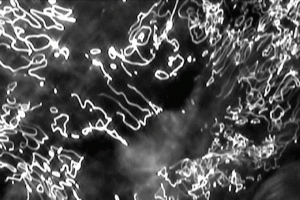« Reviews
Joyas Latinoamericanas
Art Space Virginia Miller Galleries, Miami
By Janet Batet
Under the suggestive title “Joyas Latinoamericanas” (Latin American Jewels), Art Space Virginia Miller Galleries, in Miami, offered us a balanced account of the contemporary art in the region. The presence of great figures, such as, José Clemente Orozco and Francisco Toledo (Mexico); Gina Pellón and Wifredo Lam (Cuba); Ramón Oviedo (Dominican Republic); Elmar Rojas (Guatemala), coexists in frank dialogue with mid-career artists like Michelle Concepción (Puerto Rico), Marco Tulio (Colombia), Humberto Castro (Cuba), Mateo Argüelles Pitt (Argentina), Enrique Campuzano and Soledad Salamé (Chile), Sergio Garval (Mexico).
Passing the threshold of the gallery, the viewer is challenged by a small vibrant jade green rareté. Untitled, 1978, Guth Gerzso (Mexico, 1915-2000) arouses particular interest. This lovely painting is unusual due to its small size (only 6 ½ x 6 ½ inches). Gerzso’s pictorial universe is characterized by the use of space as a dramatic compositional element. Consequently, the medium or large-scale emphasizes the monumental nature of his proposal. It is a universe dominated by the geometric abstraction, where greens, ochres and blues create enigmatic compositions: architectural structures that seem inspired by the colossal pre-Columbian Mexican heritage; topographies of the vast and disparate Mexican landscape where woodlands, sea and desert become unfathomable forces and archetypes of the soul.
El Cano mudo, 1993, is a fury. The imposing expressionist painting by Arnaldo Roche-Rabell (Puerto Rico, 1955) captures our attention at once. A whirlwind of strident, hurtful yellow lines, takes us into the excitement and frenzy of a cockfight, where everything is dominated by passion, that passion that only stops at death. The canvas appears as a snapshot of the climax moment of the fight where individuality disappears to embody one unique entity, a single delusional force: tremendous, fiery, fatal. Roche-Rabell’s artworks are the result of the tremendous collusion -and collision- between the popular imagination and reality. The rites and traditions of the Borinquén become a metaphorical point of departure for the tireless scrutiny of the forces, fears and passions of man.
Sharing the same room, in an obvious face-to-face contrast, highlights the almost mystical quietness of On the Center: A Tree, 1990. This canvas is the expression of a fundamental concern, which has guided Antonio Henrique Amaral’s artistic production over the years: the devastating and disastrous deforestation of the Amazon. The tree in the center is almost a deity, an object of worship, an animistic force and the pinnacle of the history and culture of one of the world’s last natural places of refuge. The oppressive metal teeth of the saw fence act as a threatening decorative border, which irreverently menaces the survival of core values: our nature and mystic legacy.
Soledad Salamé (Santiago, Chile, 1972) delights us with her very eloquent video Fusión (Fusion), a testimony to her environmental interests - the poetic and continually changing abstract compositions generated by the constant flow of rhythm in the song of life: the precious nature of water presented as a vital, animated element and a metaphor for memory and remembrance. This ecological interest has guided Salamé throughout her entire career, appearing as a recurring element in her paintings, photographs, videos and sculptures. Concerns like global warming, contamination, and solar energy distinguish her very contemporary poetics. Her fascination with time - another essential, natural component latent in all her works - finds perfect fulfillment in her multimedia artwork, where rhythm, sequence and interdependence speak to the interrelatedness of the world we inhabit.
“Joyas Latinoamericanas” is a balanced, interesting selection, as well as a graceful polyphony of the contemporary art of the region.
Filed Under: Reviews



































